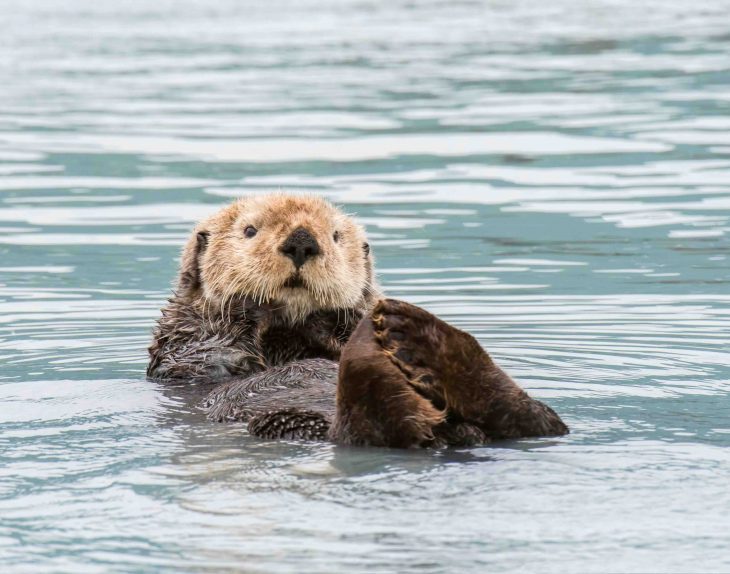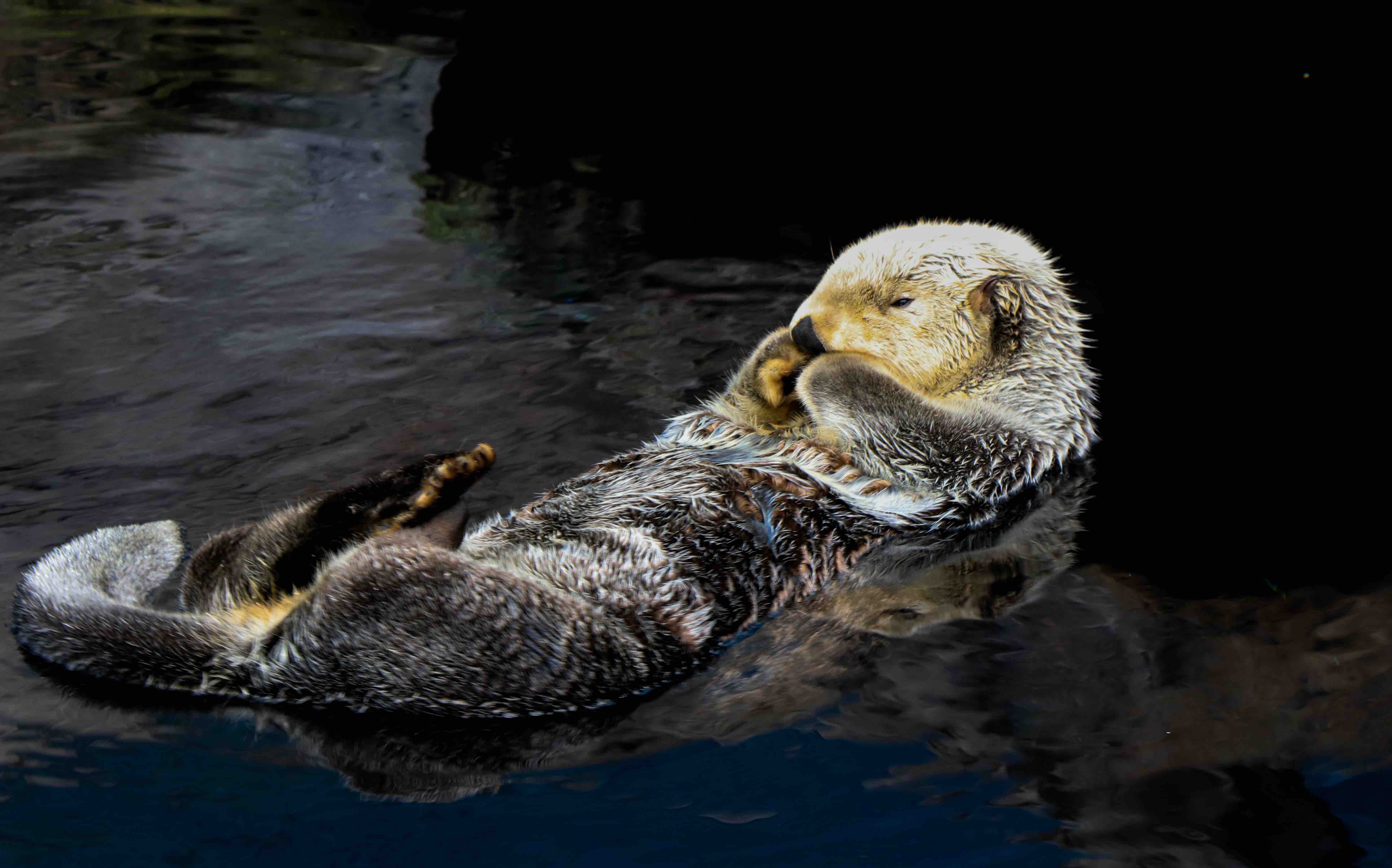
Sea otters are adorable marine mammals that captivate both children and adults with their playful nature and charming appearance. These fascinating creatures live in coastal waters and exhibit unique behaviors that make them truly special. If you’re curious to learn more about sea otters, here are 11 fun facts that will pique your interest.
Sea Otter Description
Sea otters are the smallest marine mammals and can grow up to 4 feet (1.2 meters) in length. They have dense fur that helps keep them warm in cold ocean waters. Their fur is so thick that it consists of over one million hairs per square inch, making it the densest fur of any animal.
Fluffy Buoyancy
Unlike other marine mammals, sea otters do not have a layer of blubber to keep them warm. Instead, they rely on their dense fur and a layer of air trapped within it for insulation. This air layer also provides natural buoyancy, allowing them to float effortlessly on the water’s surface.
A Tool-Wielding Species
Sea otters are incredibly resourceful creatures known for their adept tool use. They use rocks as makeshift anvils to crack open the shells of their favorite prey, such as clams, crabs, and sea urchins. These clever mammals will often float on their backs, place a rock on their chests, and skillfully smash the shellfish against it to access the tasty morsels inside.

Playful Aquatic Acrobat
Sea otters have a playful nature and love to engage in acrobatic behavior. They can be seen somersaulting, sliding down coastal rocks, and tossing objects in the water. These play sessions not only provide entertainment but also serve as a way for sea otters to strengthen social bonds and practice important survival skills.
Family Matters
Sea otters are social animals that live in family groups called rafts. These rafts can consist of up to 50 individuals, typically led by a dominant female known as the alpha female. The alpha female is responsible for guiding the group and ensuring their safety and well-being.
A Voracious Appetite
Sea otters have a high metabolic rate, and to fuel their energy needs, they must eat a substantial amount of food each day. On average, a sea otter consumes about 25% to 30% of its body weight in food daily. To satisfy their voracious appetite, sea otters spend a significant portion of their time foraging for prey along the ocean floor.
A Keen Sense of Touch
Sea otters have incredibly sensitive forepaws that allow them to locate and capture prey with precision. Their paws are equipped with highly dexterous fingers that can differentiate between textures and textures, helping them locate hidden delicacies in crevices and rocky areas.
Conservation Status
Sea otters were once hunted extensively for their fur, leading to a significant decline in their population. Today, they are listed as a protected species, and their numbers have slowly recovered. However, they still face threats such as pollution, habitat loss, and the impact of climate change. Conservation efforts are crucial to ensure the long-term survival of these remarkable creatures.
Underwater Nurseries
Sea otters give birth to their young in the water, and newborn pups are incredibly adorable. They are born with their eyes open, a fluffy coat, and the ability to swim shortly after birth. Mother otters are attentive and spend a considerable amount of time grooming and nurturing their offspring, teaching them essential survival skills until they are ready to venture out on their own.
Sea Otter’s Favorite Pastime: Grooming
Sea otters are meticulous groomers and spend a significant portion of their day grooming their fur. Grooming helps keep their fur clean, free of parasites, and properly insulated. To groom, they use their teeth to carefully untangle their fur and then use their forepaws to fluff it up and distribute natural oils that help repel water.

Endearing Otter Vocalizations
Sea otters communicate using a range of vocalizations, including whistles, chirps, and growls. Each vocalization serves a specific purpose, such as establishing territory, expressing distress, or signaling to other otters. The varied sounds of sea otters add to their charm and provide insight into their social interactions.
Final Thoughts
Now that you’ve discovered these delightful facts about sea otters, you can appreciate their unique qualities and the wonders of the marine world. These charismatic creatures continue to capture the hearts of people worldwide with their playful antics and their important role in maintaining the balance of coastal ecosystems.
Frequently Asked Questions
What are some fun facts about baby sea otters?
Baby sea otters, called pups, are incredibly cute and fluffy. They are born with their eyes open and can swim shortly after birth. Pups stay close to their mothers, who teach them essential survival skills such as hunting and grooming.
What special thing do sea otters do?
Sea otters are known for their exceptional tool use. They use rocks as tools to crack open the shells of prey, such as clams and crabs. This behavior showcases their intelligence and resourcefulness.
What do otters do to have fun?
Otters engage in various playful activities to have fun. They somersault, slide down rocks, and toss objects in the water. These play sessions not only provide entertainment but also help strengthen social bonds and practice important survival skills.
Are sea otters friendly?
Sea otters are generally non-aggressive and not harmful to humans. However, it’s important to remember that they are wild animals and should be observed from a safe distance to avoid disturbing their natural behavior.
Do sea otters feel love?
While it is difficult to determine if sea otters feel emotions like love in the same way humans do, they do form strong social bonds with their family members and exhibit nurturing behaviors towards their young.
Was this page helpful?
Our commitment to delivering trustworthy and engaging content is at the heart of what we do. Each fact on our site is contributed by real users like you, bringing a wealth of diverse insights and information. To ensure the highest standards of accuracy and reliability, our dedicated editors meticulously review each submission. This process guarantees that the facts we share are not only fascinating but also credible. Trust in our commitment to quality and authenticity as you explore and learn with us.
